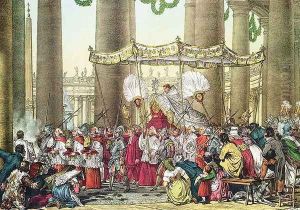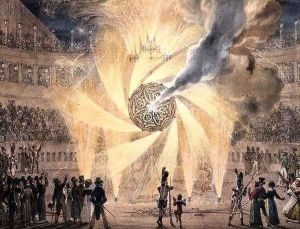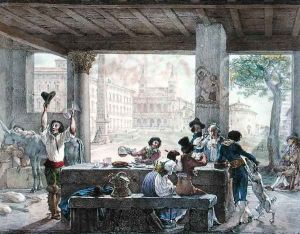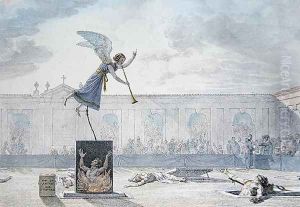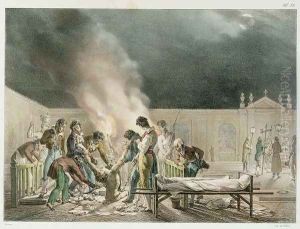Antoine Jean-Baptiste Thomas Paintings
Antoine Jean-Baptiste Thomas was a French painter and printmaker born in 1791 in Marseille, France. He is not as widely known as some of his contemporaries, and there is limited information available about his life and career. However, it is known that he was active during a period that saw the rise of Romanticism in art, which influenced his style and subject matter.
Thomas studied art in Paris and was a student of the renowned painter Jacques-Louis David, who was a leading figure in the Neoclassical movement. Under David's mentorship, Thomas would have been exposed to the rigorous academic standards and the emphasis on drawing from the antique and from life that characterized Neoclassical art. However, as Romanticism began to take hold, there was a shift towards expressing emotion, individualism, and the sublime in art. These elements began to appear in Thomas's work as well.
Throughout his career, Thomas exhibited his work at the Paris Salon, the official art exhibition of the Académie des Beaux-Arts in Paris. The Salon was the principal showcase for French artists to display their latest works and to gain recognition. Thomas's participation in these exhibitions indicates that he was an artist with a certain level of ambition and desire for public recognition.
Thomas's art often depicted historical and mythological subjects, which were popular themes at the time. His style combined the clear form and structure he would have learned from his Neoclassical training with a more emotive and dramatic approach that was characteristic of Romantic art. Although he did not achieve the level of fame as some of his contemporaries, his work contributed to the rich tapestry of French art during the early 19th century.
Antoine Jean-Baptiste Thomas passed away in 1834. His legacy as an artist is preserved through the works he left behind, which can be found in collections and museums that focus on French art of this period. Despite the scarcity of detailed records on his life, Thomas remains a figure of interest to art historians studying the transitions and cross-currents between Neoclassicism and Romanticism in early 19th-century French art.
